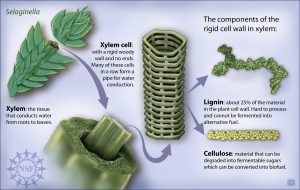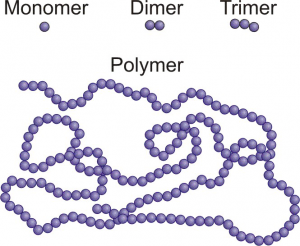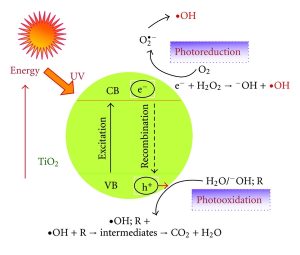Lignin is one of the most abundant materials on Earth but it is still painfully difficult to work with. Lignin is the name we give to a group of polymers that make plants stiff and somewhat waterproof. It is made of many aromatic groups that could be useful but its structure is so unpredictable that it ends up being an obstacle in processes like biofuel synthesis.

Location of lignin in a primitive plant: Sleaginella
National Science Foundation https://nsf.gov/news/mmg/mmg_disp.jsp?med_id=62375&f
So, the problem with lignin is that we don’t know how it will break down until it has been broken down. Many studies have tried and failed to use oxidation-reduction reactions and electrochemical processes to break lignin down into useful components. The processes are long, complicated, dependant on high temperatures and nothing seems to work well enough.
Researchers at the University of Michigan published a paper for a one pot, room temperature method to break down lignin. To do so they combined electricity and a relatively common compound for catalysis NHPI. The advantage of this approach is they knew how the NHPI would react with a C-O bond in the pine lignin they studied. The known process told them how the reaction would start and what to expect if it worked. This catalyst is also cheaper than metal catalysts.
Then, they needed to keep the reaction going to prevent a small amount of lignin pieces from reattaching to the larger pieces. To do this, they tested many solvents and used known electrochemical conditions until they found evidence of lignin monomers and dimers (pieces of one or two molecules broken from the lignin polymer).

Polymer-dimer-monomer relation
http://www.webassign.net/question_assets/wertzcams3/ch_13/manual.html
However, all this work was done with very small amounts of material. To make the reaction work at a larger scale they used a modern technique called photocatalysis.

An example of a photocatalysis reaction
https://www.hindawi.com/journals/jnm/2012/624520/fig2/
The team found that lignin was also breaking down at the larger scale and the yield was pretty good for a lignin experiment. The study showed a hopeful future for lignin research and application as well as for electrochemistry and photocatalysis processes.
Isabella Correa

One response to “Lignin: using the whole plant”